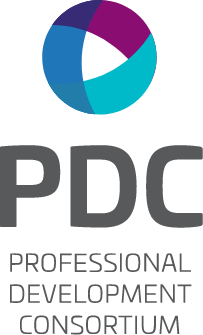You are here
Rule Change Alert: What you need to know about California’s new ethics code
May 24, 2018
Stuart Teicher, Esq., Legal Educator, Teicher Professional Growth, LLC
The Model Rules of Professional Responsibility were promulgated by the American Bar Association back in the days when I was sporting a mullet. The year was 1983 and, incidentally, my mullet was glorious. While my mullet eventually went out of fashion, the same cannot be said of the Model Rules. In fact, over the following years every state in the Union adopted some version of that Model Code with some tweaks here and there. There was, however, one holdout. California. But that’s all changed now.
This month the California Supreme Court adopted a massive overhaul of that state’s ethics code. While the Court did not adopt the ABA Model Code verbatim, it’s impact is significant. In some instances, California lawyers might not recognize much of a difference between the old rule and the new version. In other sections, however, the changes are drastic.
California lawyers need to be educated about the new rules. The changes will go into effect in November, so there’s some time to get your seminars together. But don’t delay because there are some important new rules that must be explained. In many instances there are important terms of art that have been imported from the ABA-style code, and those terms will be brand new for California attorneys.
Here’s a perfect example of what I mean— consider the rules on conflicts. Current Rule 3-310(C)(3) from the California Rules of Professional Conduct refers to the prohibition against representing a client whose interest is “adverse” to another client. However, the new section (Rule 1.7) refers to situations where a client’s interest is “directly adverse” to that of another client. And to make matters more confusing, when one reviews Rule 1.9 (conflicts with former clients), one notices that the rule refers to a lawyer’s interests being “materially adverse” to a former client. “Adverse,” “directly adverse,” and “materially adverse.” What’s the difference? I could tell you now, but I think that would be dangerous. Teaching the nuances of attorney ethics has a mystical sleep-inducing effect and I wouldn’t want you to fall asleep while reading this (spoiler: the main difference revolves around determining whether there is “harm” to the client).
This change in the rule on conflicts is only the tip of the proverbial iceberg. If you look at the Supreme Court’s Order (which can be found here), you’re likely to ask yourself, where do I start? Well, I’d recommend looking at four sections in particular.
First, tackle conflicts. Those issues are always hot in law firms. Plus, the whole “adversity” issue that I mentioned above is quite important and it could take a while to digest.
Second, I’d take the time to explain the new rule on Declining or Terminating Representation (Rule 1.16). While both the new rule and its predecessor (California Rule 3-700) divide up a lawyer’s obligation into situations where withdrawal is mandatory vs. situations where it’s permissive, the language in the new section contains some small but potentially important additions. For instance, the drafters slipped in an extra “reasonable” here and there, and otherwise added some ABA-style nuances that might go unnoticed.
Third, spend some time teaching about the new rule that addresses the allocation of decision making authority between lawyer and client (Rule 1.2). When teaching that rule, pay special attention to the terms “objectives” and “means” because they are terms of art. Also note the interplay with new Rule 1.4 that addresses lawyer-client communication.
Fourth, spend a few moments explaining the new rule that addresses when lawyers represent organizations, Rule 1.13. That rule is just plain messy— it’s packed with content and it cross references a bunch of other rules. The new version sounds a lot like the old Rule 3-600 (Organization as Client), but lawyers will likely need some hand holding to fully understand the changes there.
One last comment. You might want to resist the temptation to try teaching these lessons all at once. Ethics education can be dry under normal circumstances. A comparative analysis of old and new ethics codes could be positively desert-like! You might want to break this education down into manageable chunks.
Stuart I. Teicher, Esq. is a professional legal educator who focuses on ethics law and writing instruction. Mr. Teicher teaches CLE seminars in law firms; he is a Supreme Court appointee to the New Jersey District Ethics Committee where he investigates and prosecutes grievances filed against attorneys; and he is an adjunct professor of law at Georgetown Law where he teaches Professional Responsibility.


